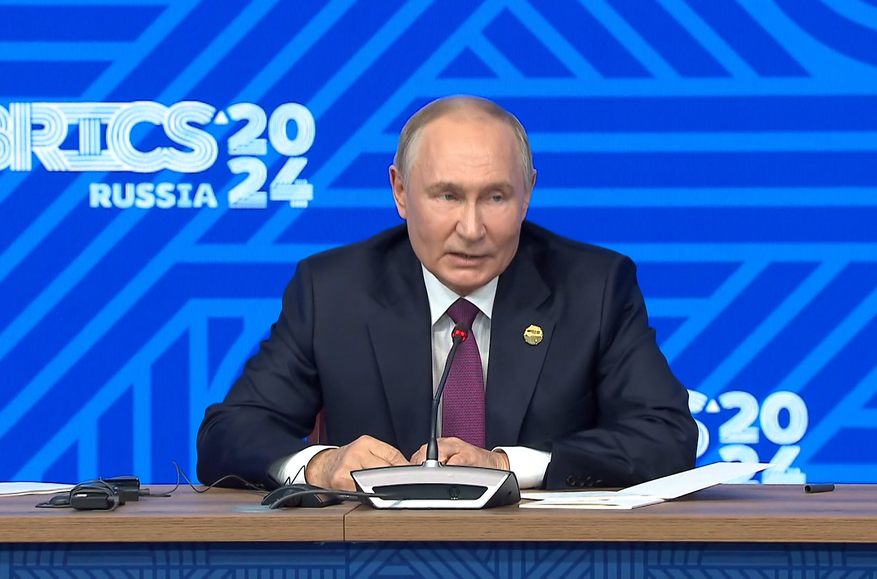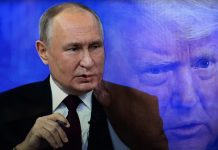By Peter Dickinson, for UkraineAlert
One of the many myths and legends surrounding the Russian invasion of Ukraine is the idea that Kyiv rejected a reasonable Russian peace deal in the early weeks of the war. In reality, recently obtained documents confirm that the terms offered by the Kremlin in spring 2022 would have left Ukraine partitioned, disarmed, internationally isolated, and utterly unable to defend itself against further Russian aggression. In other words, Vladimir Putin’s alleged peace proposal was in fact a call for unconditional surrender and a blueprint for the destruction of the Ukrainian state.
Documents released this week by Radio Free Europe provide important new insights into the severity of the Kremlin’s demands when Russian and Ukrainian delegations sat down at the negotiating table in the first weeks of the war. As Putin’s armies swept across southern Ukraine and advanced on Kyiv, Russian officials listed their conditions to halt the invasion and implement a ceasefire. The resulting draft treaty spells out the unacceptable costs of what would have amounted to Ukraine’s capitulation.
In terms of territorial concessions, Ukraine was expected to cede Crimea and the Donbas region outright, while also accepting the ongoing occupation of areas then under Russian control until Moscow deemed that its conditions had been fully met. Kyiv would also have been forced to grant Russian the status of official state language and adopt a range of laws targeting Ukrainian religion, history, and national identity that harked back the russification policies of the Soviet and Tsarist empires.
The most detailed and revealing segment of the draft peace treaty dealt with Ukraine’s demilitarization. Russia called for the Ukrainian army to be drastically reduced to a skeleton force of just fifty thousand personnel. This was approximately one-fifth of the prewar total and a tiny fraction of Ukraine’s current military, which is believed to number around one million soldiers. Meanwhile, tight restrictions were to be imposed on the quantity of armor Ukraine could possess, the types of missiles the country could develop, and the size of the Ukrainian Air Force.
The Kremlin’s peace plan also obliged Ukraine to renounce its NATO membership ambitions and agree not to enter into bilateral alliances or seek military aid from Western countries. In later drafts dating from the final stages of the abortive peace process in April 2022, Russia also somewhat absurdly insisted on a veto over any international response to future attacks on Ukraine. If Ukraine’s leaders had accepted Moscow’s thinly veiled ultimatum, the country would have been disarmed and defenseless.
While Russia’s demands were obviously unacceptable, this has not stopped Putin from repeatedly pointing to the failed negotiations of spring 2022 as proof that he seeks a peaceful settlement to the war. Furthermore, he has suggested on numerous occasions that the terms outlined in Belarus and Istanbul during the initial phase of Russia’s invasion should remain the basis for any negotiated peace agreement.
Far from representing a viable vision for a sustainable peace, Putin’s 2022 proposal actually underlines his commitment to extinguishing Ukrainian statehood and erasing Ukraine from the map entirely. Cut off from Western military aid and without an army of its own, an emasculated and demoralized rump Ukraine would be in no position to offer any serious resistance if Russia chose to renew the invasion.
There can be little doubt that this was Putin’s plan. Whether his end goal was the complete conquest of the country or the installation of a puppet government, it is virtually impossible to imagine an independent Ukrainian state surviving very long in such desperate circumstances. Instead, much of Ukraine would likely be annexed outright, with the remaining territory entrusted to Kremlin loyalists.
The peace terms proposed by Russia in 2022 and subsequently reiterated by Putin himself make a mockery of suggestions that Ukraine could end the invasion by entering into some kind of land-for-peace compromise with the Kremlin. Putin’s war aims clearly extend far beyond the approximately twenty percent of Ukraine that is now under Russian occupation, and involve the takeover of the entire country along with the systematic suppression of Ukrainian identity.
This raises difficult questions for the growing chorus of voices calling for a negotiated settlement based on the current front lines of the war. Crucially, anyone who believes Putin would be satisfied with his present gains must explain why he remains so insistent on Ukraine’s disarmament. After all, this cannot possibly be justified on the grounds of Russian national security. Indeed, no serious analyst would argue that Ukraine poses a credible military threat to the far larger and infinitely mightier Russian Federation.
The only plausible reason to disarm Ukraine is to render the whole country defenseless and leave it at Putin’s mercy. This should tell you all you need to know about his true intentions and the scale of his imperial ambitions. From the very beginning, Putin has viewed the full-scale invasion of Ukraine as an historic mission that will define his personal place in Russian history and Russia’s place in the modern world. Attempting to appease him with limited territorial concessions would be both dishonorable and delusional, and would set the stage for further Russian aggression in Ukraine and beyond.
By Peter Dickinson, for UkraineAlert
Peter Dickinson is editor of the Atlantic Council’s UkraineAlert service.





